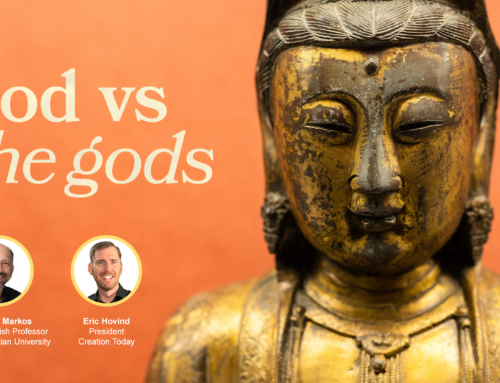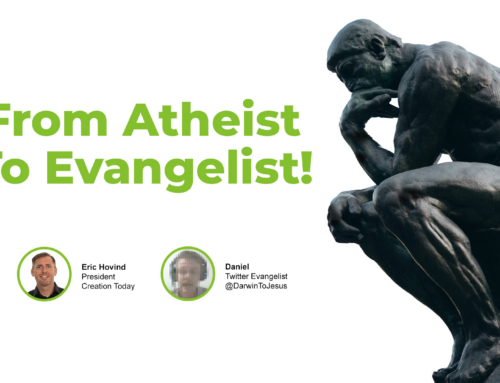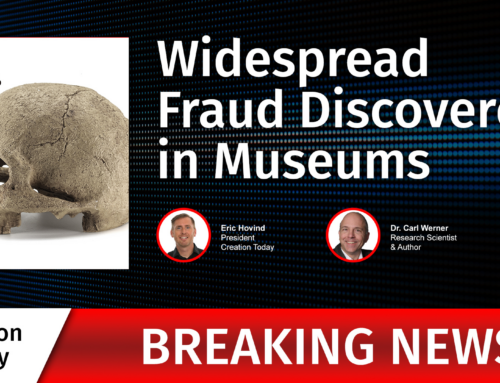William Paley’s book, Natural Theology, is a work of monumental importance.[1] It has been hugely influential in the field of natural sciences – especially Biology – even though the majority of people have never heard of it. Published in 1802, it purports to give “evidences of the existence and attributes of the Deity”.

Picture from Wikipedia Commons, Public Domain in USA.
In Paley’s time, Natural Theology was an established field of study, though it is now either neglected or known under another name. It can be defined as “the branch of philosophy and theology which attempts to prove God’s existence, define God’s attributes, or derive correct doctrine based solely from human reason and/or observations of the natural world.” If classical theology is concerned with a study of the scriptures, then natural theology is the attempt to derive theological ideas from nature, without reference to scripture.
One of the main reasons for the importance of Paley’s book is its position in the history of science. Paley was teaching at Cambridge University when Charles Darwin was a student. Darwin was much taken with the concept of natural theology, and, though he was otherwise considered to be a poor student, Paley’s natural theology course was one in which Darwin excelled. The particular type of “proofs” offered by Paley’s work may have had an influence on Darwin’s eventual rejection of divine origin as an explanation for life.
There are many who have taken Paley’s work as an early handbook for the concept of Intelligent Design (ID). Intelligent Design proponents themselves have defined ID thus:
The theory of intelligent design holds that certain features of the universe and of living things are best explained by an intelligent cause, not an undirected process such as natural selection.[2]
There is much that can be said that is positive about Paley’s Natural Theology. Paley clearly approaches each of his evidences with a sense of awe. The style and layout of skeletal and muscular mechanisms, for instance, are cited as evidence of divine origin.
We may observe, what I believe is universal, an exact relation between the joint and the muscles which move it. Whatever motion the joint, by its mechanical construction, is capable of performing, that motion, the annexed muscles, by their position, are capable of producing. For example; if there be, as at the knee and elbow, a hinge-joint, capable of motion only in the same plane, the leaders, as they are called, i. e. the muscular tendons, are placed in directions parallel to the bone, so as, by the contraction or relaxation of the muscles to which they belong, to produce that motion and no other. If these joints were capable of a freer motion, there are no muscles to produce it. (Page 81)[3]
Such mechanisms are, for Paley, clear examples of “contrivance”. He is scathing of the idea that these could have come about by chance.
The contrivances of nature surpass the contrivances of art, in the complexity, subtlety, and curiosity of the mechanism; and still more, if possible, do they go beyond them in number and variety; yet, in a multitude of cases, are not less evidently mechanical, not less evidently contrivances, not less evidently accommodated to their end or suited to their office, than are the most perfect productions of human ingenuity. (Page 11)
There is some similarity to the more up-to-date arguments from design offered by Christian writer and scientist, Professor Stuart Burgess, in his book Hallmarks of Design. Burgess shows that the arrangement of muscles on the knee joint constitute a four-bar mechanism, which cannot be evolved from a simpler two-bar mechanism; there being no such possibility as an intermediate three-bar mechanism.
The mammalian knee joint is a clear example of a mechanical mechanism that could not have evolved…. The knee joint is actually a very sophisticated mechanism and a masterpiece of design.[4]
The problem with the concept of natural theology – in common with the concept of ID – is that the argument does not go far enough. Although the evidences offered are persuasive, they do not actually tell us anything about the nature of the Deity who has created everything. This leads Paley to make some assertions on the nature of God, which he seems to regret, and which this editor cannot share, as I find them to be unbiblical.
The reader will observe that I speak of the revelation of Christianity as distinct from Christianity itself. The dispensation may already be universal. That part of mankind which never heard of CHRIST’S name, may nevertheless be redeemed, that is, be placed in a better condition, with respect to their future state, by his intervention; may be the objects of his benignity and intercession, as well as of the propitiatory virtue of his passion. But this is not “natural theology;” therefore I will not dwell longer upon it. (Footnote on page 339)
While I cannot support or condone Paley’s apparent universalism, my purpose in offering this edition of his work is for another reason. It is to show that even in Darwin’s day – indeed before his work – there were eminent scientific writers whose arguments were already boring holes in the concept of evolution – a philosophy that was already taking hold long before Darwin. Darwin’s own offerings seem to pale into insignificance compared to the masterful use of design argument, to show the inevitability of intelligent design. Paley shows that the assumption that God created is a sound one. It is the assumption of the Bible, which starts with the words “In the beginning, God…” and nowhere makes any attempt to prove the existence of God. Indeed, the Bible’s only comment on the possible non-existence of God is to state that “The fool has said in his heart ‘there is no God’” (Psalm 14:1). The criticism we might have of Paley’s work is a general criticism of natural theology – and its modern counterpart, ID. Dr Georgia Purdom has put our criticism succinctly.
ID may serve as a useful tool in preliminary discussions about God and creation to gain an audience that might be turned off at the mention of the Bible. However, in further discussions, the Bible as the biblical creationists’ foundation should be primary.[5]
Burgess, for example, has anchored all his design arguments from scripture. His attitude to design is illustrated by his opening paragraph.
The Bible teaches that all the different kinds of creature in nature have been directly created by God and have not evolved from a common primitive ancestor….Irreducible mechanisms such as the mammalian knee joint provide powerful living evidence that creatures were indeed created as distinct kinds.[6]
There is a sense in which Paley’s arguments on their own lack authority. That is not to say that they are not persuasive. Rather, they make more sense with a starting point or presupposition that the Bible is true. Proverbs has a warning for those who would suppose that their own arguments, without scripture, can be sufficient – “Trust in the LORD with all your heart, And lean not on your own understanding”. (Proverbs 3:5) This is an inadequacy of the field of natural theology. Although Romans 1 shows us that creation exists to point us to the creator, the theology that we thus derive condemns rather than saves.
For since the creation of the world His invisible attributes are clearly seen, being understood by the things that are made, even His eternal power and Godhead, so that they are without excuse, because, although they knew God, they did not glorify Him as God, nor were thankful, but became futile in their thoughts, and their foolish hearts were darkened. (Romans 1:20-21)
In conclusion, we see that an argument from design is insufficient, because it only leads so far, and can never lead to the person who God really is. For the latter, we need words of revelation in the Bible, which should be our foundation. Nevertheless, it is instructive that, starting from nature, an early 19th century writer can be so sure that God is behind everything in the universe, when one of his students should later be so adamant that nothing was due to divine fiat. For this reason alone, Paley’s Natural Theology deserves to be better known. Its arguments may be insufficient – yet they are head and shoulders above those of Darwin. Darwin’s theories have persisted only because they attempt to explain origins in a way which does not require God – and a rebellious world prefers to consider itself unbeholden to God, so that they do not have to submit to His authority. In that wish, they will ultimately be disappointed, as:
At the name of Jesus every knee should bow, of those in heaven, and of those on earth, and of those under the earth, and that every tongue should confess that Jesus Christ is Lord, to the glory of God the Father. (Philippians 2:10-11)
[1] This article is adapted from Paul Taylor’s Preface to his edition of William Paley’s Natural Theology. Paley, W., ed. Taylor, P.F. (2010), Natural Theology, (Leicester, UK: J6D Publications), pp i – v
[2] Discovery Institute – Top Questions, < http://www.discovery.org/csc/topQuestions.php >, accessed 10/07/2013
[3] Page numbers in this article are from Paul Taylor’s own edition of Paley’s Natural Theology; Paley, W., ed. Taylor, P.F. (2010), Natural Theology, (Leicester, UK: J6D Publications)
[4] Burgess, S. (2005), Hallmarks of Design, (Leominster, UK: Day One Publications)
[5] Purdom, G. (2006), The Intelligent Design Movement; Does the identity of the Creator really matter?, in Answers Magazine (Answers in Genesis), Volume 1 Issue 2, pp18-21
[6] Ob cit






